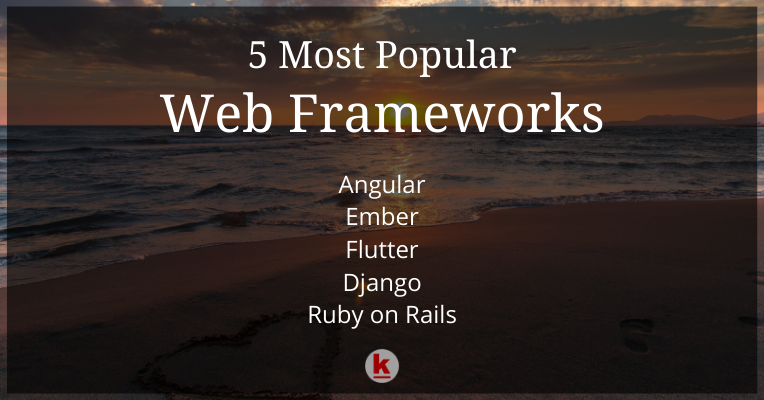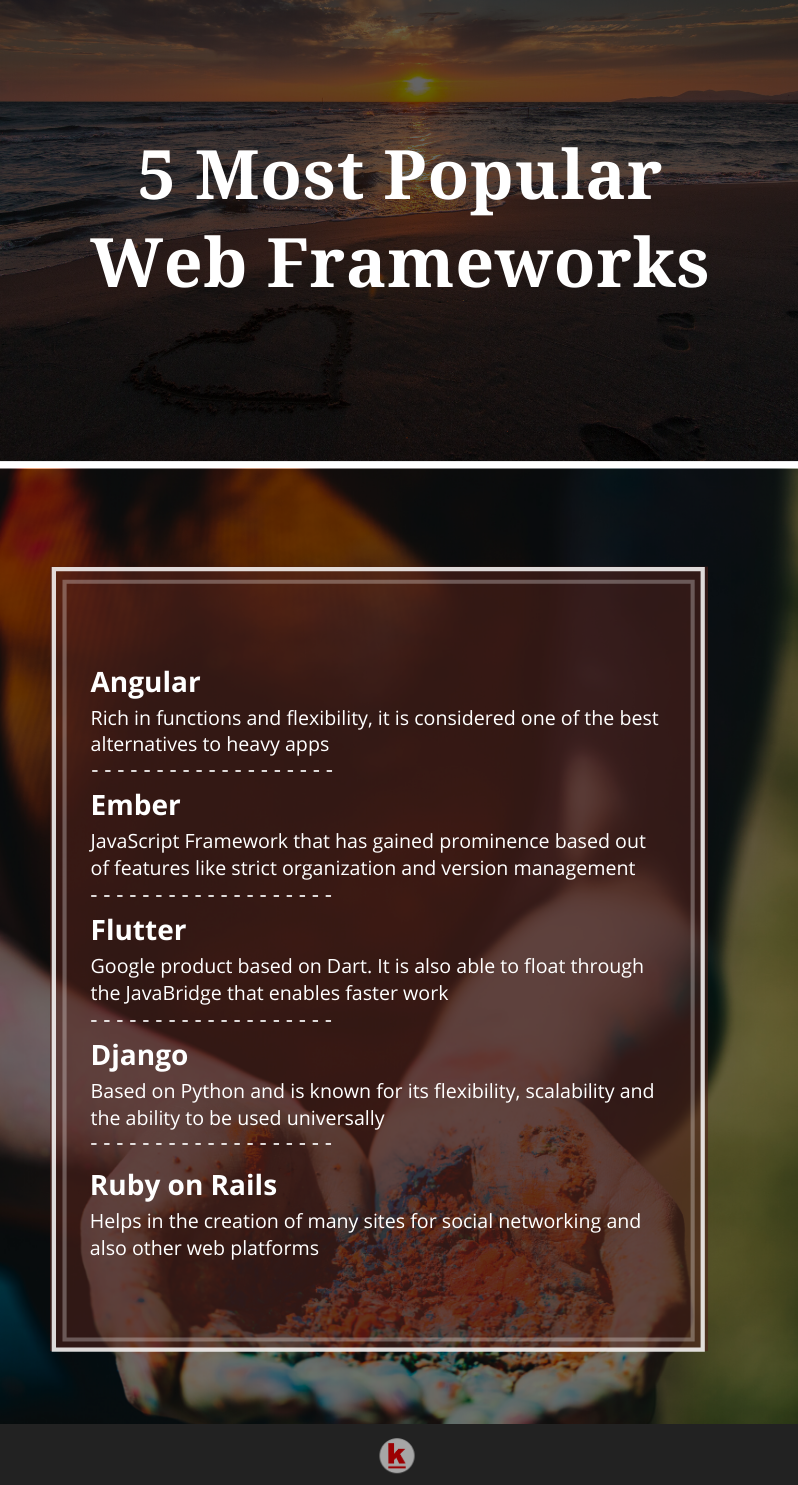
5 Most Popular Frameworks

This is the age of machines and technology. We are not exactly enslaved by machines but yes dependency cannot be negated. This too is growing at an alarming rate. All this being triggered by the tech disruptions that call for a major overhaul of the gameplan. With the growing expanse of the internet and the onslaught of the technologies, there is a constant push on the businesses to constantly reinvent themselves to stay relevant and competitive. Thus, there is an apparent rise in web development standards and complexities. Hence the need for web frameworks was felt across the industries by the developers as the most credible tool for building highly interactive and rich websites.
What is a Web Framework?
Simply put, a framework refers to a software tool that helps you to build and run various web applications without the need for you to write code by yourself. Unlike in earlier days when everything was coded by hand and in case it was required it had to be carried out by that specific developer only.
A framework primarily has two main functions which also marks their categorization:
- Server-Side (Backend): It is with the help of architecture and rules of these frameworks that you can create basic web pages, landing pages. These frameworks are also helpful in forming the output data and further enhance data security. However, for building a web application with a complete interface, there has to be more elaborate functionality. It is also helpful in combating and cyberattacks. Some popular web frameworks in this category are Django, Zend, Ruby on Rails, etc.
- Client-Side (Frontend): Here you do not need any kind of business logic. The whole work takes place within the browser and many user interfaces can be improved or implemented. Many animated features can be created with different frontend frameworks and SPA (single-page applications).
Next comes a new category that is cross-functional and is what came to be known as the web frameworks. These span both the client-side and the server-side needs that has led to their immense popularity.
Features of Web Frameworks
What is it that has led to the popularity of these frameworks? Let us explore some of the most useful features.
- Web Caching: It rules out the possibility of server overload and helps in the storage of different documents. This makes it possible to be used in varied systems.
- Scaffolding: It lets specific parts of the web applications to be automatically generated by the framework. This is helpful in pushing the speed of the development cycle to new highs and also standardization of the codebase.
- Security: There are many options for granting access or rejecting the same to different functions in a framework. You can also identify the profiles that often make use of the app for clickjacking.
- Web Templates: It is a system of technologies and software for constructing and deployment of the web pages.
- URL Mapping: It helps you to create a catchy website name and also helps in indexing by the search engines.
Popular Web Frameworks
- Angular: This is seen as one of the best front-end frameworks for web applications. It takes a comfortable lead among many products of Google for the developers. The best advantage of this framework is its highly rich set of functions and flexibility. It is considered as one of the best alternatives to heavy apps due to the two-way binding and dependency injection. It finds use in the coding of single-page applications and even the progressive web applications.
- Ember: It can be said as a highly dependable and mature Javascript framework that has gained traction in recent years in the web development circles. It has gained prominence based out of features like strict organization, highly forward version management, and a wide array of support for both the advanced and the older technologies. Often used for the creation of highly complex web apps.
- Flutter: Another known product from Google that is used for developing mobile Android and iOS applications. Being written in Dart, it is able to float through the JavaBridge that enables faster work.
- Django: This one did not lose sheen ever since it hit the market in 2005 and is one of the top-most picks in web frameworks as it is based on Python, one of the most popular programming languages. The primary advantages of the same are flexibility, scalability and the ability to be used universally.
- Ruby on Rails: One of the most popular frameworks present in the world today. It finds use with over 826,000 websites that are live as it comes with a whole bucket of uses of which the most resonating one is the use of complicated development programs. It also comes endowed with many wonderful tools and libraries that bring down the time for development. It helps in the creation of many cloud-based platforms, sites for social networking and also other web platforms.
Thus, we saw that web frameworks have made the lives of developers much easier and made the whole process more streamlined. The most popular web frameworks are the ones that are flexible and also help in looking after different needs of society. Picking the one that best suits your needs is a daunting task due to the wide choice available. The choice will have a profound impact on your performance statistics. The best way forward is to define your requirements, have clarity of vision and then move ahead with faith.
RedAlkemi is a collaborative space for contributors to submit quality content in design and digital marketing. Interesting? Blog with us!
